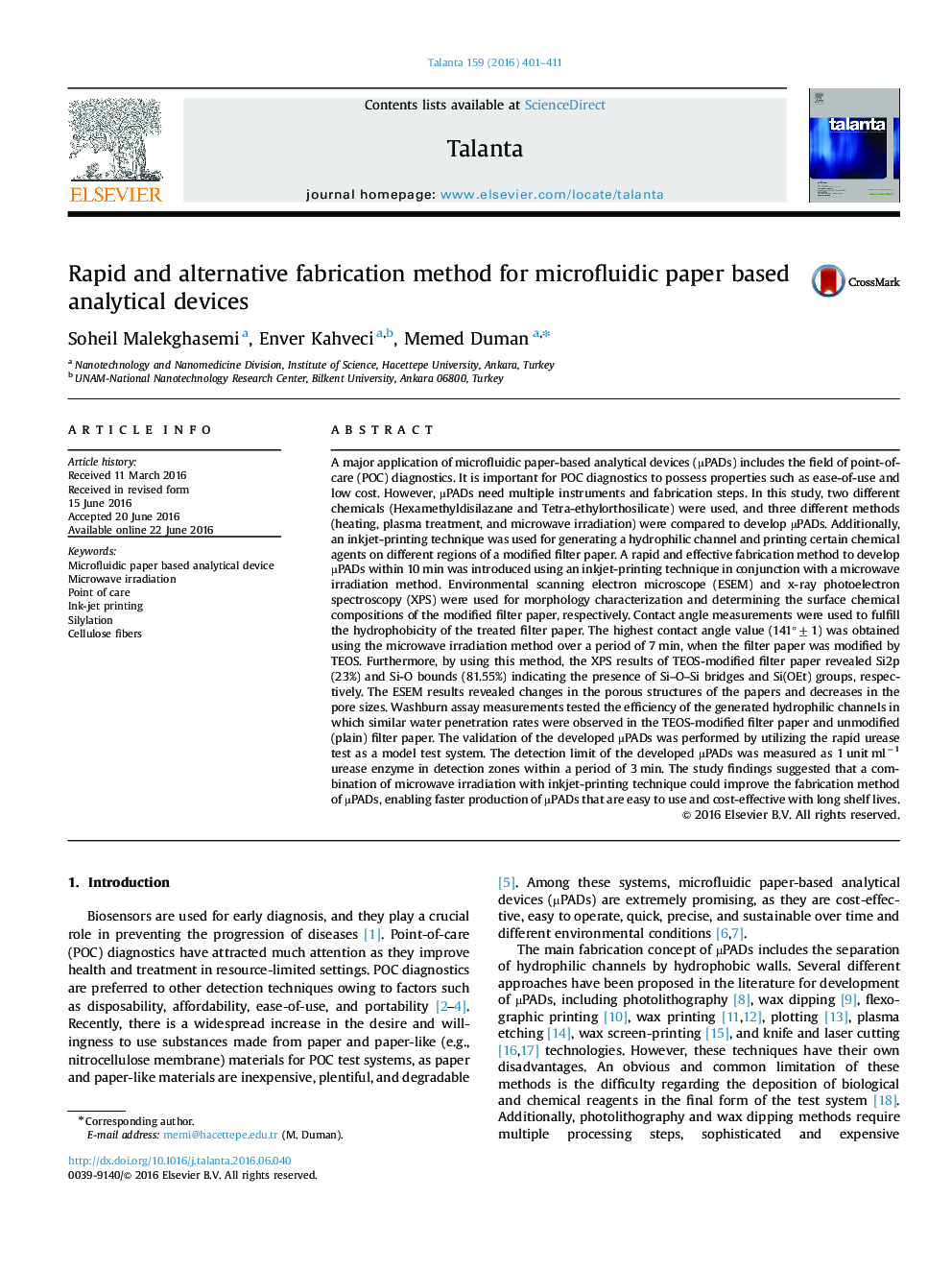| کد مقاله | کد نشریه | سال انتشار | مقاله انگلیسی | نسخه تمام متن |
|---|---|---|---|---|
| 1241791 | 1495777 | 2016 | 11 صفحه PDF | دانلود رایگان |
• A new, rapid and alternative protocol for fabrication of µPAD have been described.
• TEOS was a silylation agent for the filter paper in microwave irradiation.
• Hydrophilic channels were successfully generated by ink-jet printing technique.
• The limit of detection of developed µPADs was measured 1 unit ml−1 urease enzyme within 3 min.
• This new combination allows providing simple-to-use and cost-effective µPADs.
A major application of microfluidic paper-based analytical devices (µPADs) includes the field of point-of-care (POC) diagnostics. It is important for POC diagnostics to possess properties such as ease-of-use and low cost. However, µPADs need multiple instruments and fabrication steps. In this study, two different chemicals (Hexamethyldisilazane and Tetra-ethylorthosilicate) were used, and three different methods (heating, plasma treatment, and microwave irradiation) were compared to develop µPADs. Additionally, an inkjet-printing technique was used for generating a hydrophilic channel and printing certain chemical agents on different regions of a modified filter paper. A rapid and effective fabrication method to develop µPADs within 10 min was introduced using an inkjet-printing technique in conjunction with a microwave irradiation method. Environmental scanning electron microscope (ESEM) and x-ray photoelectron spectroscopy (XPS) were used for morphology characterization and determining the surface chemical compositions of the modified filter paper, respectively. Contact angle measurements were used to fulfill the hydrophobicity of the treated filter paper. The highest contact angle value (141°±1) was obtained using the microwave irradiation method over a period of 7 min, when the filter paper was modified by TEOS. Furthermore, by using this method, the XPS results of TEOS-modified filter paper revealed Si2p (23%) and Si-O bounds (81.55%) indicating the presence of Si–O–Si bridges and Si(OEt) groups, respectively. The ESEM results revealed changes in the porous structures of the papers and decreases in the pore sizes. Washburn assay measurements tested the efficiency of the generated hydrophilic channels in which similar water penetration rates were observed in the TEOS-modified filter paper and unmodified (plain) filter paper. The validation of the developed µPADs was performed by utilizing the rapid urease test as a model test system. The detection limit of the developed µPADs was measured as 1 unit ml−1 urease enzyme in detection zones within a period of 3 min. The study findings suggested that a combination of microwave irradiation with inkjet-printing technique could improve the fabrication method of µPADs, enabling faster production of µPADs that are easy to use and cost-effective with long shelf lives.
The combination of microwave irradiation with inkjet-printing technique can improve the fabrication method of µPADs and make them be produced faster, simple-to-use and be cost-effective with long shelf life.Figure optionsDownload as PowerPoint slide
Journal: Talanta - Volume 159, 1 October 2016, Pages 401–411
